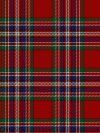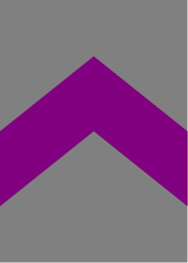Radford University
Virginia
1910
Formerly “State Normal and Industrial School for Women at Radford” and “Radford State Teachers College”





Students at the State Normal and Industrial School for Women at Radford chose purple and gray as their school colors and wrote their Alma Mater song in the fall of 1913, the first semester classes were offered. The college became coeducational in 1972 and in the spring semester of 1978 purple and gray were replaced by red, white, navy blue, and forest green, which are used in a plaid pattern of the “MacFarlane Red” pattern recorded with the Scottish Register of Tartans.
During the first half of the 20th century the Intercollegiate Bureau of Academic Costume (IBAC) kept a list of the school colors of various colleges and universities and recorded this information as a generic hood lining description in the Bureau’s files, usually as a standard “chevron pattern” hood lining (e.g., “crimson with a white chevron”, “yellow with a green chevron”, “dark blue with a gold chevron”, etc.). These generic descriptions are responsible for the majority of the duplicate hood linings that appear in the published IBAC lists from 1927 and 1948. If a school contacted the Intercollegiate Bureau to request an official hood lining pattern and sent the Bureau color samples so that the precise shades of the school’s colors could be ascertained, the Bureau would assign a unique lining pattern to the school, which would replace the generic description in the IBAC record for that college or university.
Sometimes a school would independently adopt a hood lining without authorization from the Intercollegiate Bureau. In these cases the IBAC would add this information to its files, often altering the pattern slightly to avoid duplicating a hood lining the Bureau had already officially approved. This situation became more common in the 1950s and 1960s as the influence of the Intercollegiate Bureau began to wane. What this means is that today it is difficult to know whether a new hood lining for a particular college that appears in an IBAC list from the 1960s or 1970s had been officially authorized by the Bureau, or if the college had independently designed its hood lining and the Bureau simply transcribed that information from another source into the IBAC records.
The Intercollegiate Bureau records for Radford University are a perfect illustration of this type of tangled academic hood history. A generic “purple with a gray chevron” hood lining description for Radford Normal School for Women was cited in IBAC lists from 1927 and 1948. The college might have contacted the Bureau in 1935 when the first bachelor’s degrees were conferred for an official hood lining assignment or might have independently begun using a unique pattern during that period, because in the 1948 IBAC list mentioned above the college is listed a second time, as “East Radford Normal School” with a hood lined purple and silver gray (light gray). An identical citation is in a 1972 IBAC list

But this 1972 list also has a duplicate record for “Radford College” that interchanged the lining colors and inverted the chevron. The IBAC had probably copied this information from citations published by Kevin Sheard in Academic Heraldry in America (1962) and Academic Dress and Insignia of the World (1970), which described Radford’s hood lining as gray with a reversed purple chevron. The colors may have been interchanged and the chevron may have been reversed (by the college or by the IBAC) to avoid confusion with the hood lining of the University of St. Thomas in Minnesota (purple with a gray chevron), which had apparently been assigned in the 1940s or 1950s.
Because Radford no longer uses purple and gray school colors, the Intercollegiate Registry of Academic Costume has reassigned the university a hood lining in the “MacFarlane Red” plaid tartan pattern shown below.
